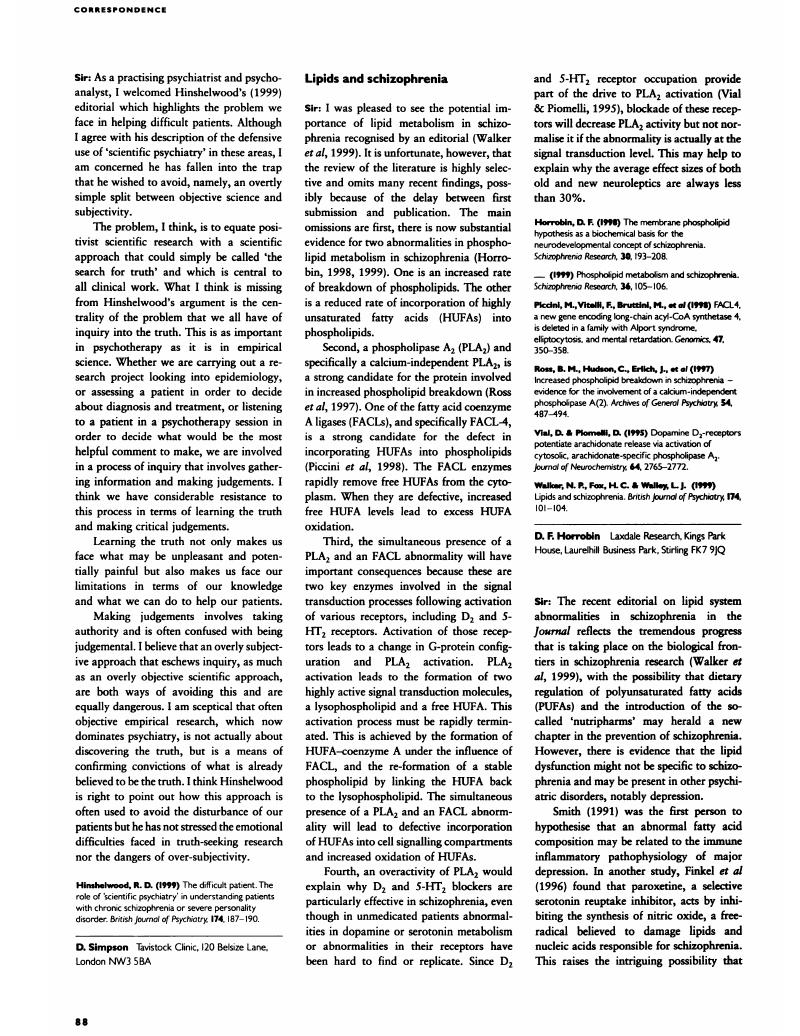Crossref Citations
This article has been cited by the following publications. This list is generated based on data provided by Crossref.
Saugstad, L.F.
2001.
Manic depressive psychosis and schizophrenia are neurological disorders at the extremes of CNS maturation and nutritional disorders associated with a deficit in marine fat.
Medical Hypotheses,
Vol. 57,
Issue. 6,
p.
679.
Nuss, Philippe
Tessier, Cedric
Ferreri, Florian
De Hert, Marc
Peuskens, Joseph
Trugnan, Germain
Masliah, Joelle
and
Wolf, Claude
2009.
Abnormal transbilayer distribution of phospholipids in red blood cell membranes in schizophrenia.
Psychiatry Research,
Vol. 169,
Issue. 2,
p.
91.
Wright, Pádraig
and
Kraus, John E.
2012.
Core Psychiatry.
p.
259.
Schmitt, Andrea
Martins-de-Souza, Daniel
Akbarian, Schahram
Cassoli, Juliana S.
Ehrenreich, Hannelore
Fischer, Andre
Fonteh, Alfred
Gattaz, Wagner F.
Gawlik, Michael
Gerlach, Manfred
Grünblatt, Edna
Halene, Tobias
Hasan, Alkomiet
Hashimoto, Kenij
Kim, Yong-Ku
Kirchner, Sophie-Kathrin
Kornhuber, Johannes
Kraus, Theo F.J.
Malchow, Berend
Nascimento, Juliana M.
Rossner, Moritz
Schwarz, Markus
Steiner, Johann
Talib, Leda
Thibaut, Florence
Riederer, Peter
and
Falkai, Peter
2017.
Consensus paper of the WFSBP Task Force on Biological Markers: Criteria for biomarkers and endophenotypes of schizophrenia, part III: Molecular mechanisms.
The World Journal of Biological Psychiatry,
Vol. 18,
Issue. 5,
p.
330.




eLetters
No eLetters have been published for this article.